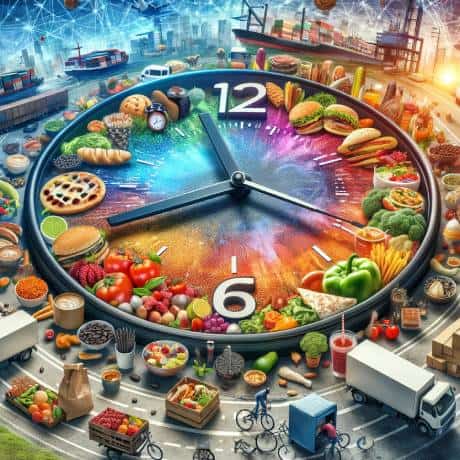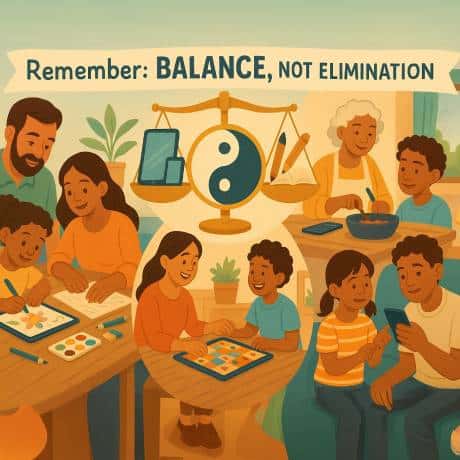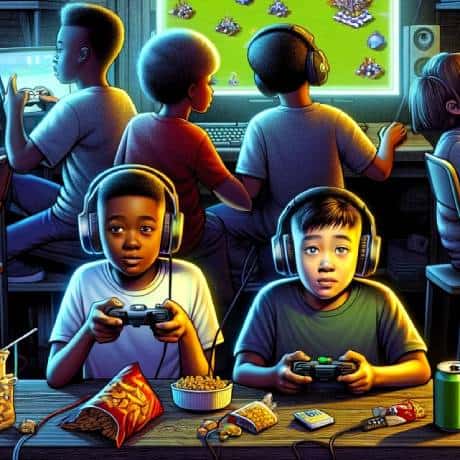Life’s Main Quest: 7 Traps That Keep You Grinding Side Quests
In the Game of Life, your mind is both your controller and your final boss. Here are some of the most brutal truths in psychology… the ones quietly stealing your XP, rerouting your quests, and keeping you grinding in the wrong zones.
Table of Contents
1. The Hedonic Treadmill: Your Brain’s Built-In Nerf
 That promotion, relationship, or achievement you’re grinding toward? Your brain adapts to it in 3-6 months and resets your happiness to baseline. You’re designed to never feel satisfied for long.
That promotion, relationship, or achievement you’re grinding toward? Your brain adapts to it in 3-6 months and resets your happiness to baseline. You’re designed to never feel satisfied for long.
How to Know It’s Happening: You achieved something major but you’re already stressed about the next thing. The goalposts keep moving. Nothing ever feels like enough.
The Counter-Strategy: Stop playing for permanent happiness. It doesn’t exist. Build systems that generate consistent small wins instead. Design your daily loops to be inherently satisfying, not just means to an end. The journey is the game, not the cutscene at the end.
Action Checklist:
- Identify one daily activity you genuinely enjoy doing (not for a future payoff)
- Schedule it into your routine like a non-negotiable quest
- Track how you feel during the process, not just after completing it
- Design one “micro-win” you can achieve every morning before noon
Questions to Ask Yourself:
- What did I enjoy doing as a kid before I cared about outcomes?
- Which parts of my current goals do I actually enjoy vs. tolerate?
- If no one would ever know about my achievements, what would I still do?
💡 Happiness isn’t a final boss, it’s the XP you gain from playing daily.
2. Present Bias: Your Future Self Is Getting Wrecked
 Your brain values immediate rewards roughly 2.5x more than delayed ones. Every day, you’re choosing the quick dopamine hit over your actual objectives. And it doesn’t feel like choosing.
Your brain values immediate rewards roughly 2.5x more than delayed ones. Every day, you’re choosing the quick dopamine hit over your actual objectives. And it doesn’t feel like choosing.
How to Know It’s Happening: You plan to work on important goals but consistently choose easier, instantly gratifying activities. Your to-do list is full of urgent-but-unimportant quests while your main storyline collects dust.
The Counter-Strategy: Remove the decision entirely. Automate savings, pre-commit to gym sessions with friends, use website blockers during work hours. You can’t win this fight with willpower. You need to change the game mechanics.
Action Checklist:
- Set up one automatic transfer or subscription that serves your future self
- Delete or block one app/site that’s stealing your time
- Schedule your most important task when your willpower is highest (usually morning)
- Create accountability by telling someone about your commitment
Questions to Ask Yourself:
- What would my future self thank me for doing today?
- Which decisions am I making daily that I could automate or eliminate?
- What’s the smallest friction I could add to bad habits and remove from good ones?
3. The Spotlight Effect: You’re Playing to an Audience That Isn’t Watching
 You think people notice and remember your failures 5-10x more than they actually do. This phantom audience is paralyzing you.
You think people notice and remember your failures 5-10x more than they actually do. This phantom audience is paralyzing you.
How to Know It’s Happening: You’re not pursuing opportunities because of what people will think. You’re overthinking social interactions days later. You’re optimizing for avoiding judgment rather than achieving goals.
The Counter-Strategy: Run the experiment. Do something mildly embarrassing and watch how quickly people forget. Most NPCs in your life are too busy with their own storylines to care about yours. The only opinion that matters long-term is your own deathbed review.
Action Checklist:
- Do one small thing this week you’ve been avoiding due to potential embarrassment
- After any social interaction you’re overthinking, set a 48-hour timer to revisit it
- Ask a friend what they remember about your “embarrassing moment” from last month
- Take one risk you’ve been postponing because of what others might think
Questions to Ask Yourself:
- What would I do if I knew no one was watching or judging?
- Can I name three “embarrassing” things other people did last month?
- In five years, will this moment matter at all?
- Whose approval am I actually seeking, and why does it have power over me?
4. Loss Aversion: You’re Hoarding in a Game With No Inventory Limit
 Your brain feels losses roughly 2x more intensely than equivalent gains. You’re holding onto hollow relationships, draining jobs, and sunk costs because letting go feels like failure. Even when staying costs you everything.
Your brain feels losses roughly 2x more intensely than equivalent gains. You’re holding onto hollow relationships, draining jobs, and sunk costs because letting go feels like failure. Even when staying costs you everything.
How to Know It’s Happening: You justify staying in situations with “but I’ve already invested so much time here”. You’re more focused on not losing what you have than gaining what you want. You’re playing defense instead of offense.
The Counter-Strategy: Regularly audit your life like you’re reviewing equipment. Ask: ‘If I wasn’t already in this situation, would I choose to enter it today?’ If no, you’re hauling baggage that slows you down. Drop it. The real loss is your finite time.
Action Checklist:
- List three things you’re doing only because you’ve “already invested so much”
- Apply the “fresh start” test to one major commitment this week
- Calculate the actual hours/money you’re spending to avoid “wasting” a past investment
- Set a quit date for one thing that’s no longer serving you
Questions to Ask Yourself:
- If I were starting from zero today, would I choose this path?
- What am I holding onto that’s actually holding me back?
- How much future am I sacrificing to justify my past?
- What would I tell my best friend to do if they were in my exact situation?
5. Social Comparison: You’re Playing Someone Else’s Game
 Your brain automatically benchmarks your success against others. Especially those slightly ahead of you. This means your goals are contaminated by other people’s objectives, not your actual values.
Your brain automatically benchmarks your success against others. Especially those slightly ahead of you. This means your goals are contaminated by other people’s objectives, not your actual values.
How to Know It’s Happening: Your definition of success looks suspiciously like what gets celebrated on social media. You want things because others have them, not because you’ve actually reflected on what matters to you. You’re chasing metrics that don’t align with your character build.
The Counter-Strategy: Define your win conditions before looking at other players. What would success look like if no one ever knew about it? That’s your real main quest. Everyone else is playing a different game with different stats. Comparison is looking at the wrong scoreboard.
Action Checklist:
- Write down your definition of success without mentioning any other person
- Unfollow or mute five accounts that trigger comparison anxiety
- List three things you want that aren’t visible on social media
- Celebrate one “invisible” win this week that no one else would notice
Questions to Ask Yourself:
- What do I want that I’ve never seen someone else have?
- Which of my goals would I abandon if they couldn’t be shared or seen?
- Am I chasing this because I want it, or because others have it?
- What does winning look like in my game, not theirs?
6. The Planning Fallacy: Your Quest Log Is a Lie
 You consistently underestimate how long things take by 40-50%. This isn’t optimism. It’s a cognitive bug that destroys your planning and motivation when reality hits.
You consistently underestimate how long things take by 40-50%. This isn’t optimism. It’s a cognitive bug that destroys your planning and motivation when reality hits.
How to Know It’s Happening: Projects consistently take longer than expected. You feel perpetually behind. You’re demoralized because you’re failing at timelines that were fantasy to begin with.
The Counter-Strategy: Whatever time you estimate, multiply by 2-3x for the real duration. Add buffer quests into your schedule. Build your strategy around the worst-case timeline, not the best-case. Finishing early feels amazing. Running late feels crushing. Choose your difficulty setting accordingly.
Action Checklist:
- Review your last three “completed” projects and calculate actual vs. estimated time
- For your next project, triple your initial time estimate
- Block out buffer time between commitments (at least 25% extra)
- Track one week of tasks with both estimated and actual time spent
Questions to Ask Yourself:
- When was the last time something took less time than I expected?
- What am I consistently underestimating (emails, meetings, transitions)?
- Am I setting myself up for motivation or disappointment with these timelines?
- What would my schedule look like if I planned for reality instead of fantasy?
7. The Consistency Trap: Your Identity Is Caging You
 Once you’ve publicly committed to being “the type of person who X”, your brain will sacrifice your actual goals to maintain that identity. You’re choosing consistency over growth.
Once you’ve publicly committed to being “the type of person who X”, your brain will sacrifice your actual goals to maintain that identity. You’re choosing consistency over growth.
How to Know It’s Happening: You avoid opportunities because “that’s not who I am”. You maintain habits that no longer serve you because they’re part of your self-image. You’ve turned your past decisions into your future prison.
The Counter-Strategy: Hold your identity loosely. You’re not a fixed character class. You’re a player who can respec at any time. Past you made the best decisions with their information. Present you gets to make different choices. Say “I used to be X, now I’m exploring Y” without shame.
Action Checklist:
- Identify one “I’m not the type of person who…” statement that’s limiting you
- Try one thing this week that contradicts your current self-image
- Update your bio or how you introduce yourself to reflect growth, not fixed traits
- Give yourself permission to change your mind about something you were “sure” about
Questions to Ask Yourself:
- What am I not trying because “that’s not who I am”?
- Which version of my identity is based on who I was, not who I’m becoming?
- What would I experiment with if I didn’t have to protect my self-image?
- If I could rewrite my character description today, what would it say?
- Am I defending my identity or my potential?
The Final Boss: Psychological Reactance
Here’s the meta-trap: your brain hates being told what to do. Even by yourself. The moment you “should” yourself toward your goals, you trigger rebellion. This is psychological reactance… the harder you push yourself, the harder your brain pushes back. Every “I have to” creates an equal and opposite “I don’t want to.”
How to Know It’s Happening: You feel immediate resistance when someone (including you) tells you what to do. You procrastinate hardest on things you’ve committed to publicly. The moment you make a strict rule for yourself, you want to break it. You rebel against your own plans and feel trapped by your own goals.
The Counter-Strategy: Stop commanding yourself. Start collaborating with yourself. Frame goals as choices, not obligations. Replace “I have to work out” with “I’m choosing to work out because I want X benefit.” Give yourself permission to quit… knowing you can stop makes it easier to continue. Design your environment so the desired action feels like freedom, not a cage.
Action Checklist:
- Replace three “I should” statements with “I choose to because…” statements
- Give yourself explicit permission to skip one commitment this week (the freedom reduces reactance)
- Reframe one goal from an obligation into an experiment you’re curious about
- Identify one rule you’ve made for yourself that’s triggering rebellion and soften it
Questions to Ask Yourself:
- What am I resisting simply because I “should” do it?
- How would this goal feel different if no one expected it of me?
- What would I do if I gave myself complete permission to quit?
- Am I trying to force myself, or invite myself?
- Which of my goals feel like freedom versus which feel like prison?
💡 The paradox: You gain control by letting go of control. Make your goals feel like choices, not chains.

The Ultimate Strategy: Playing With the Bugs, Not Against Them
You can’t willpower your way through millions of years of evolution. These biases aren’t bugs you can patch… they’re core features of your operating system. But here’s the exploit: once you know the game mechanics, you can design around them.
Stop fighting. Start designing.
- For the Hedonic Treadmill: Build satisfaction into the process, not just the outcome
- For Present Bias: Automate decisions so your future self wins by default
- For the Spotlight Effect: Do the embarrassing thing and watch how fast people forget
- For Loss Aversion: Audit your life regularly and cut what’s draining you
- For Social Comparison: Define your win conditions before looking at other players
- For the Planning Fallacy: Triple your time estimates and celebrate finishing early
- For the Consistency Trap: Hold your identity loosely and give yourself permission to evolve
- For Psychological Reactance: Frame everything as choice, never obligation
Make the easy choice the right choice. Make progress feel like play. Make your main quest irresistible.
The game is rigged, but once you know the mechanics, you can work with them instead of against them.
Your main quest is waiting. Stop grinding side missions.
FAQ: The Questions Everyone Asks
Q: Can I ever actually overcome these biases, or am I just stuck with them?
You can’t eliminate them. They’re hardwired into your operating system. But you can design around them. Think of it like playing a character with known weaknesses… you don’t fix the weakness, you build your strategy to compensate for it. The goal isn’t to become bias-free. It’s to become bias-aware.
Q: Why does knowing about these traps not stop me from falling into them?
Because knowledge doesn’t equal behavior change. Your logical brain knows sugar is bad, but your reward system still wants the dopamine hit. These biases operate at a level below conscious reasoning. You need to change your environment and systems, not just your awareness. Knowing the trap exists is step one. Redesigning your life so you can’t fall in is step two.
Q: How do I know which bias is affecting me right now?
Start with the pattern. Are you procrastinating? That’s Present Bias. Are you staying in a bad situation? That’s Loss Aversion. Are you chasing someone else’s definition of success? That’s Social Comparison. The “How to Know It’s Happening” sections are your diagnostic tool. Run through them monthly.
Q: What if my goals actually ARE contaminated by other people’s expectations? How do I find my “real” goals?
Strip away the audience. Ask yourself: “If no one would ever know about this achievement, would I still want it?” Then ask: “If I couldn’t post about it, talk about it, or be recognized for it, would I still do it?” Your real goals survive these tests. Everything else is performance.
Q: I tried the 2-3x time multiplier and my estimates are STILL wrong. What now?
You’re probably still being optimistic about interruptions, energy levels, and decision fatigue. Track your actual time religiously for two weeks. Not what you think it takes… what it actually takes, including all the context switching and breaks. Most people discover they have about 3-4 hours of real productive time per day, not 8-10.
Q: How do I hold my identity loosely without becoming a person with no backbone or values?
There’s a difference between core values and rigid identity. Your values are your compass… things like honesty, growth, compassion. Those stay consistent. Your identity is your job title, your hobbies, your friend group, your beliefs about what “type” of person you are. Those can evolve. Don’t confuse the two. You can be committed to integrity while remaining flexible about everything else.
Q: What if I automate/design my environment but then I just feel like a robot with no free will?
This is the paradox: you have more freedom when you have fewer decisions. Decision fatigue is real. Every choice drains you. When you automate the unimportant stuff, you preserve your energy for the choices that actually matter. Steve Jobs wore the same outfit every day so he didn’t waste mental energy on clothes. That’s not being a robot… that’s being strategic.
Q: How do I deal with the guilt of “quitting” things I’ve invested years into?
Reframe it. You’re not quitting. You’re reallocating. Those years weren’t wasted… they taught you what you don’t want. The guilt you feel is just Loss Aversion doing its thing. Ask yourself: would you rather lose the past years, or the past years PLUS all your future years? The investment is already gone. The only question is what you do with the time you have left.
Q: Can I actually be happy if I accept that the hedonic treadmill is real?
Yes. But you have to redefine what happiness means. It’s not a destination or a permanent state. It’s a skill you practice. It’s finding satisfaction in the process, not the outcome. It’s appreciating what you have before your brain adapts to it. Gratitude journals work because they interrupt the adaptation process. The treadmill doesn’t stop, but you can learn to enjoy the running.
Q: What if I start ignoring the “spotlight effect” and genuinely embarrass myself?
You will. And it will be fine. The spotlight effect doesn’t mean embarrassment never happens… it means it matters way less than you think. People might notice in the moment, but they forget quickly because they’re worried about their own embarrassments. The cost of occasional embarrassment is tiny compared to the cost of never trying anything.
Q: How often should I do these “life audits” and self-reflection exercises?
Monthly for quick check-ins. Quarterly for deeper audits. Annually for major strategy reviews. But don’t turn self-improvement into another treadmill where you’re constantly optimizing and never living. The point is to clear the obstacles so you can actually play the game, not to spend all your time analyzing the game.
Q: What’s the one bias I should focus on first?
Whichever one is currently costing you the most. For most people, it’s either Present Bias (you’re sacrificing your future for immediate gratification) or Social Comparison (you’re chasing someone else’s definition of winning). Start there. Fix the leak that’s sinking your ship fastest.
Q: Is it selfish to stop caring what other people think?
No. It’s essential. Caring what everyone thinks means you’re trying to be everything to everyone, which means you’re nothing to yourself. You can still be kind, considerate, and empathetic while not letting other people’s opinions dictate your life choices. There’s a difference between being thoughtful and being controlled by others’ judgments.
Author:
 | Lionel Thomas Father, Gamer and Founder with a Passion for Health, AI, Environment and Gamification of Life. |
Author Tools:
- ChatGPT (Content Enhancements & Research)
- Claude (Content Enhancements & Research)
- GSpeech (Audio by AI)
- Other Tools (AI)...
Artists:
- Lionel Thomas using DALL-E 3 [AI Generated] (Header, Content)
- Lionel Thomas using Leonardo.ai [AI Generated] (Header)
References:
1. Running on the Hedonic Treadmill: A Dynamical Model of Happiness Based on an Approach–Avoidance Framework
Springer Nature Link
https://link.springer.com/article/10.100...
Summary:
Research demonstrates that individuals constantly run on a hedonic treadmill around set levels of well-being, with hedonic motivation leading people to experience hedonic activities resulting in successes or failures, while hedonic adaptation causes individuals to return to a baseline level of pleasure more quickly2. Beyond the hedonic treadmill: revising the adaptation theory of well-being
PubMed / American Psychological Association
https://pubmed.ncbi.nlm.nih.gov/16719675...
Summary:
Research indicates five important revisions to the treadmill model are needed, including that individuals' set points are not hedonically neutral, people have different set points partly dependent on temperaments, and well-being set points can change under some conditions3. Temporal landmarks help to change eating habits: the case of home delivered meals in Poland
Springer Nature Link
https://link.springer.com/article/10.100...
Summary:
Present bias reflects what behavioral economists term the tendency to disproportionally weigh immediate rewards over future ones4. Present bias and its influence on financial behaviours amongst Indians
Emerald Insight
https://www.emerald.com/irjms/article/4/...
Summary:
Understanding present bias helps explain why individuals often fail to stick to particular plans such as exercising regularly, avoiding eating junk food, or implementing financial discipline in reality5. The spotlight effect in social judgment: an egocentric bias in estimates of the salience of one's own actions and appearance
National Library of Medicine
https://pubmed.ncbi.nlm.nih.gov/10707330...
Summary:
Research provides evidence that people overestimate the extent to which their actions and appearance are noted by others, with participants who wore potentially embarrassing T-shirts overestimating the number of observers who would recall what was pictured on the shirt6. The Spotlight Effect on Social Media
Virtual Commons
https://vc.bridgew.edu/undergrad_rev/vol...
Summary:
Research found that content creators significantly overestimated the number of people that noticed their Instagram feature, thus supporting the spotlight effect hypothesis on social media7. Loss Aversion as a Potential Factor in the Sunk-Cost Fallacy
National Library of Medicine
https://pmc.ncbi.nlm.nih.gov/articles/PM...
Summary:
The sunk-cost fallacy refers to a greater tendency to continue an endeavor once an investment in time, effort, or money has been made, with the SCF occurring most often with money, less with time, and least with effort8. How the sunk cost fallacy influences our decisions
ASANA
https://asana.com/resources/sunk-cost-fa...
Summary:
Loss aversion is the tendency to avoid losses because the idea of losing something is more psychologically powerful than the idea of gaining the same thing, with winning $100 feeling good but losing $100 feeling horrible9. The Impact of Upward Social Comparison on Social Media on Appearance Anxiety: A Moderated Mediation Model
MDPI
https://www.mdpi.com/2076-328X/15/1/8
Summary:
Study examined effects of upward social comparison on appearance anxiety among young adults, with data collected from December 2023 to January 2024, showing that upward comparisons can increase anxiety when viewing idealized images on social media10. Upward social comparison and social anxiety among Chinese college students: a chain-mediation model of relative deprivation and rumination
Frontiers in Psychology
https://www.frontiersin.org/journals/psy...
Summary:
Threat effect theory shows that when individuals compare themselves to those who are better, they place themselves in a disadvantageous position and thus have a strong sense of deprivation11. Depressive symptoms and upward social comparisons during Instagram use: A vicious circle
ScienceDirect
https://www.sciencedirect.com/science/ar...
Summary:
Individuals with more depressive symptoms compare more upward on Instagram, and upward comparisons on Instagram increase depressive symptoms, creating a vicious circle12. A review of optimism bias, planning fallacy, sunk cost bias and groupthink in project delivery and organisational decision making
Behavioural Insights Team
https://www.bi.team/publications/a-revie...
Summary:
Planning fallacy describes the tendency to optimistically plan project timescales and resources and to overlook project risks, with miscalculation leading to project over-runs and over-spends occurring primarily during the project planning phase13. Using the Need for Consistency to Create Greater Commitment
Psychology Today
https://www.psychologytoday.com/us/blog/...
Summary:
Research by Burger and Guadagno found that individuals who have a clear self-concept and see themselves as helpful are more likely to remain consistent and committed, with those certain they possess charitable and helpful traits being more influenced by commitment procedures14. Understanding Psychological Reactance
PubMed Central
https://pmc.ncbi.nlm.nih.gov/articles/PM...
Summary:
Almost 60 years after Brehm first proposed reactance theory in 1966, reactance, the motivation to regain a freedom after it has been lost or threatened, leads people to resist the social influence of others, with one important component being the experience of anger15. Rebels with a cause? Adolescent defiance from the perspective of reactance theory and self-determination theory
PubMed
https://pubmed.ncbi.nlm.nih.gov/25702962...
Summary:
Psychological reactance is elicited when freedom is taken away, thereby motivating individuals to engage in oppositional behavior, with studies examining whether controlling parenting style related to adolescents' experiences of autonomy need frustration and reactance








 Snacks
Snacks Water
Water Eye Sight
Eye Sight Hearing
Hearing































